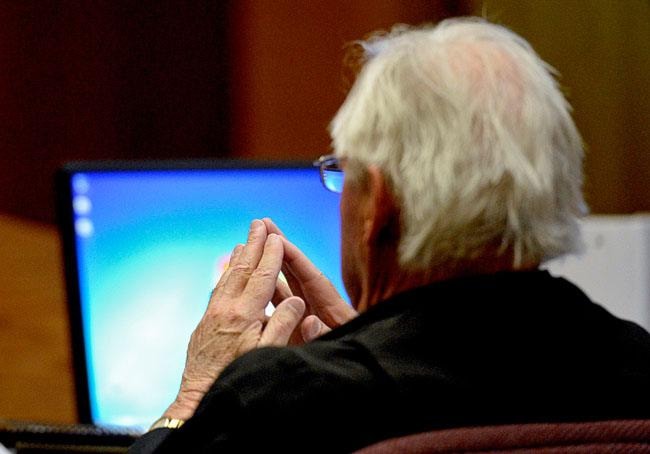At the risk of being a killjoy, it’s probably important to note that the Peel trial is unlikely to resolve anything of substance. Not this week’s trial, anyhow. Regardless of how Justice Ron Veale rules, the decision looks bound to be appealed all the way up to the Supreme Court of Canada, which ought to prolong this long-running political disaster for at least another few years yet.
The betting odds are not in the Yukon government’s favour. First Nations usually win resource battles when they hit the courts, and it’s hard to see why the Peel case, which concerns the land-use plan for a great swath of northeast Yukon that’s the size of Vancouver Island, would be any different.
Maybe the Yukon government, as it insists, followed the letter of the Peel planning process. It still seems clear it violated its spirit. Chiefs didn’t sign away their unextinguished aboriginal rights and engage in seven years of planning talks to be subjected to the kind of skullduggery seen at the final hour of the planning talks, when the Yukon government tore up the plan that was the culmination of negotiations and replace it with pretty much the opposite of what had been discussed, with the proportion of protected areas flipped on its head to allow mining in much of the watershed.
The appropriate moment for the government to spell out what it wanted in the Peel would have been at the beginning, rather than the end, of this long process. At the very least, the territory should have clearly explained it couldn’t stomach the commission’s conservation-heavy recommended plan, and provided a clear alternative. Instead, the resources minister of the day, Patrick Rouble, only issued a mealy-mouthed response that failed to clearly articulate what the government obviously wanted - namely, way more mining.
Rouble never had the courage to say as much aloud. Instead, he’d resort to euphemisms about “balance,” while never bothering to explain what proportion of protected areas would be reasonable, or to point out which plum areas for mining should remain open for development. It would fall on Rouble’s successor, following the territorial election, to explain all this, once the planning commission completed its work.
The government’s lawyer, John Hunter, now asserts that the planning commission failed to make tough decisions. That’s a bit rich. It is the Yukon government, we should remember, that spent the planning process and the following territorial election assuring the public that it could develop a Peel plan that would be all things to all people. It was the planning commission that insisted that tough trade-offs were needed, as you can’t always please both wilderness paddlers and First Nation residents, who value the area’s untouched wilderness, along with miners, who seek to dig the place up in pursuit of shiny metal. So which side was the one being, in Hunter’s words, facile and specious?
Now Veale and future judges who will rule on the case are saddled with the tough job of finding a solution.
First Nations want the courts to impose the planning commission’s final recommended plan. But a judge would need to dance around the bit in the Umbrella Final Agreement that says that the Yukon government, at the end of the day, has final say over the plan as it applies to Crown land - which, in the Peel, is nearly the whole region. So the courts may have to choose between defending the spirit of agreements and violating the letter, or vice versa.
Thomas Berger, the renowned aboriginal rights lawyer representing the plaintiffs, has proposed one way out of this tangle: the courts could send the parties back a few steps, to when the final recommended plan was supposed to undergo a public review. Berger reasons that the territory gave up its right to substantially modify the plan when it held its tongue earlier, so the government in this scenario would be unable to make any big changes to the recommended plan, but it could still tinker around the edges.
That’s really just a fancy way of tying the territory’s hands. But without doing so, what assurances would First Nations have that the government would behave any better the next time around? Of course, by the time such an option is pursued, we may well have a different government in power, which could solve a whole lot.
Maybe the Yukon Party could have gotten off the hook by actually acknowledging it had rejected, rather than modified, the final recommendations. But that would have required admitting that nearly a decade of talks had been wasted, and that efforts at reconciling the historic grievances of First Nations currently face a big setback.
Which, of course, is the case. But if the Yukon Party has shown a pattern of behaviour, it’s to ignore problems and pretend that everything is hunky dory. Admitting failure would have been uncharacteristically honest.
It seems clear that Yukon’s land claims agreements, written under the perhaps naive assumption that governments would engage in good-faith bargaining, were not designed to take this kind of abuse.
Until some faraway resolution is reached, the territory has accomplished precisely the opposite effect it had intended: no miner in his right mind will sink serious money into developing a property in the Peel, given the legal uncertainty that hangs over the entire region. Well done, sirs.
